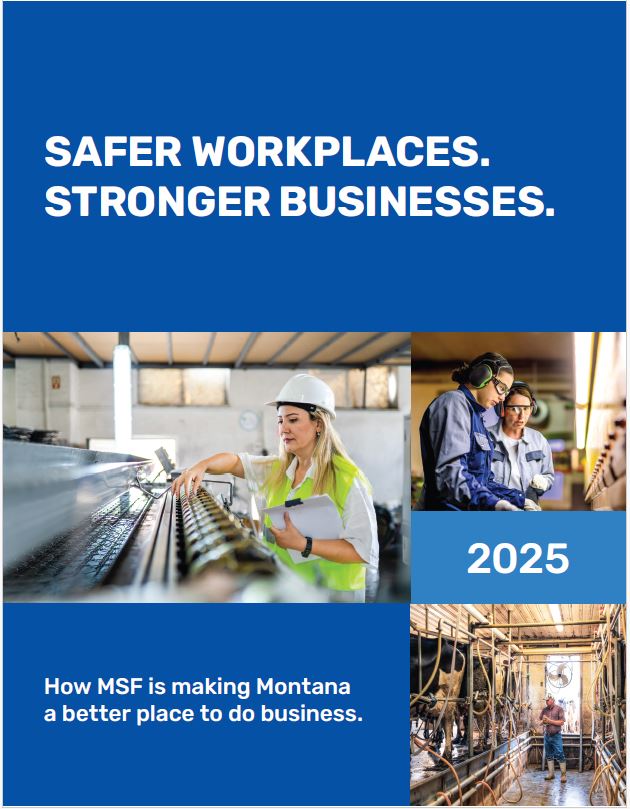Safer Workplaces. Stronger Businesses.
Learn how Montana State Fund is making Montana a better place to do business.
Protecting businesses, keeping workers safe and helping Montana’s economy thrive is what we do best at Montana State Fund (MSF). We’re an independent non-profit public corporation and the largest workers’ compensation insurer in the state. We offer a unique combination of safety programs and services that make Montana a better place for people to work and do business.
We work proactively to keep workers safe. We provide training, education and resources to prevent injuries from happening on the job. When accidents do happen, our medical and wage loss benefits help Montanans get back on their feet and back to work. This helps keep money flowing into Montana businesses and ultimately creates a more prosperous state.
MSF is not just another insurance company. We’re Montana to the core—locals who know the state, its businesses and its people. A big part of our mission is caring for those injured on the job. Everything we do at MSF is designed to build a culture of health and safety for all Montanans.
MSF is solely funded through insurance premiums and investment income. That means we receive no taxpayer appropriated dollars. We offer many of our services inhouse,
from our safety teams to auditors, claims examiners, medical staff and more. Our teams can be found in every corner of the state, including in your community.
A NON-PROFIT INDEPENDENT PUBLIC CORPORATION
MSF exists to ensure all Montana employers have access to workers’ compensation. Established in 1990 as a non-profit independent public corporation, MSF is governed by a Board of Directors selected by the Governor and confirmed by the Montana Senate. However, we operate like a domestic mutual insurance company—we’re a competitive insurer
like all the others.
For 35 years, we’ve provided a stable insurance market, as shown by dividends to MSF-insured businesses and overall rate levels. Current rates are at their lowest in MSF’s history—all while we’ve distributed record dividends to policyholders. In 2024 alone, MSF lowered policyholder rates by an average of 10% and delivered a record $43 million in dividends.
Montana’s workplace injury rate has long been higher than national averages. Our goal is to bring that average way down. Here’s how MSF supports a culture of safety for our state’s workplaces.
Safety Management Consultants
Our professional team of Safety Management Consultants (SMCs) offers one-on-one safety support for our policyholders. They provide tailored solutions to develop and grow solid workplace safety cultures. Last year, MSF conducted over 1,700 consultative safety visits with policyholders.
Safety program development
Our safety team has more than 232 years of combined experience. We work with policyholders to develop safety program materials, support safety committee work, provide on-site safety
training and create return-to-work programs, among many other initiatives.
Online safety resources
Safemt.com, our safety-focused website, offers safety tips, videos, useful resources and more for employers and employees. Learn more about safety workshops at safemt.com.
MSF is Montana’s largest (and only non-profit) workers’ compensation insurance company, insuring more employers than any other company in Montana. We cover a range of Montana’s industries and insure the majority of employers in agriculture to construction, educational services to trucking.
MSF is here for the long haul. We will continue to be an indispensable partner in achieving a safer, healthier and more prosperous Montana. We always look for innovative ways to support Montana businesses and keep workers safe.
In Session
Get the latest information about pending workers’ compensation legislation that may impact workers and/or policyholders, and learn whether MSF supports or opposes the legislation.
How Workers’ Compensation Works
See the specifics behind our partnership with businesses and the workers who power them.
More MSF Videos
Book by account size:
See how our policyholder mix – and primarily serving small businesses – keeps workers’ compensation insurance both affordable and high quality.
that pay less than $5,000 in annual premiums.

Small
Businesses
Total Premium
Volume
distribution Premium
distribution

Large
Businesses
Total Premium
Volume
comes from just 5,000 companies.
A Who’s Who of Montana’s Workers’ Compensation System
Several parties are involved in establishing and governing workers’ compensation insurance in Montana. Please click on a hexagon to learn more.
The Montana Legislature
Montana’s legislators determine workers’ compensation laws for the state. The Legislature meets primarily in odd-numbered years from January until the beginning of May. If a bill is passed by both of its chambers, it is sent to the governor.
The Executive Branch
Head of the executive branch, the governor can choose to sign a bill to make it law, veto it or allow it to become law without a signature. The governor also has an “amendatory veto” option, which allows for certain changes to a bill before sending it back to the Legislature for consideration.
The Judicial Branch
As with any law, the judiciary serves to hear, consider and rule on disputes. In addition to the courts of the judiciary, under the DOLI umbrella Montana has is a workers’ compensation court to handle disputes specifically related to claims for workers’ comp benefits. Appeals from the workers’ compensation court go directly to the Montana Supreme Court.
Insurance Companies
Hundreds of insurance companies, including Montana State Fund, are approved to sell workers’ compensation coverage in Montana. All carriers follow the same benefit structure and abide by the National Council on Compensation Insurance (NCCI) basic manual when selling policies.
Montana Department of Labor and Industry (DOLI)
DOLI regulates workers’ compensation benefits and ensures employers are compliant with workers’ compensation laws. The department also aids injured employees and provides mediators to assist in benefit disputes.
State Auditor’s Office, Commissioner of Securities and Insurance (SAO/CSI)
The SAO regulates policy enforcement and the certification of insurance companies. SAO is also responsible for the overall regulation of insurance companies in Montana.
National Council on Compensation Insurance (NCCI)
The NCCI is an independent advisory organization appointed by SAO to gather data, analyze industry trends and provide objective insurance rate and loss cost recommendations.1
1. National Council on Compensation Insurance, “About NCCI,” May 20, 2022, NCCI.com, https://www.ncci.com/Articles/Pages/AU_NCCIFactSheet.pdf, accessed October 31, 2022.
Policyholders First
The best gauge of the job we’re doing for Montana is our policyholder satisfaction.
Timely claim management
(The law allows 14.)
FAQs:
Find answers to your questions about our structure, operations, the dollars and more.
What is Montana State Fund (MSF)?
Protecting businesses, keeping workers safe and helping Montana’s economy thrive is what we do best at Montana State Fund (MSF). We’re an independent non-profit public corporation and the largest workers’ compensation insurer in the state. We offer a unique combination of safety programs and services that make Montana a better place for people to work and do business.
We work proactively to keep workers safe. We provide training, education and resources to prevent injuries from happening on the job. When accidents do happen, our medical and wage loss benefits help Montanans get back on their feet and back to work. This helps keep money flowing into Montana businesses and ultimately creates a more prosperous state.
Can I get coverage through MSF?
MSF offers coverage at a reasonable price to all employers that are required to have workers’ compensation insurance. To find out more, call us at 1-800-332-6102 or talk to your insurance agent.
As Montana’s only non-profit workers’ compensation insurer, we operate at an underwriting loss or break-even level. In other words, what we charge in rates does not cover, or just barely
covers, expenses. Dividends come from invested assets. That means any investment earnings not needed to ensure financial stability are paid to policyholders, whereas a for-profit company
would pay the same funds to stock or shareholders.
Since 1999, MSF has successfully issued $474 million in total dividends to policyholders. Dividends are not guaranteed. The amount of dividends depends on MSF’s health and financial
position, economic conditions, and the prospects for a continued stable environment. MSF distributes these funds to policyholders in keeping with our non-profit status. In 2024, MSF
issued a record $43 million in dividends. In the last four years, we’ve distributed more than $148 million through the general dividend process





